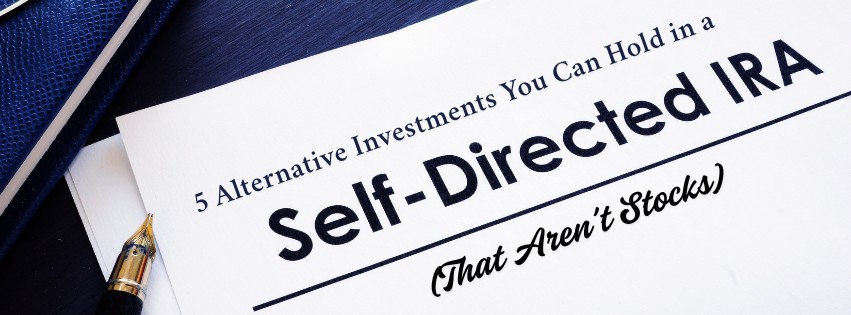
5 Alternative Investments You Can Hold in a Self-Directed IRA (That Aren’t Stocks)
5 Alternative Investments You Can Hold in a Self-Directed IRA (That Aren’t Stocks)
If you're tired of the rollercoaster ride that comes with stock market investing, you're not alone. More investors are seeking greater control and diversification—and that’s exactly what a Self-Directed IRA (SDIRA) offers. Unlike traditional IRAs, SDIRAs let you invest in a wide range of alternative, high-potential assets. Here are five powerful strategies that go beyond Wall Street.
1. Multifamily Real Estate
Multifamily properties—like apartment complexes and duplexes—are one of the most resilient and scalable assets you can invest in. Through an SDIRA, you can invest passively in syndications, where a professional operator manages the deal. These properties offer consistent cash flow, long-term appreciation, and tax-deferred growth within your IRA.
With housing in constant demand, multifamily is a cornerstone of any serious alternative portfolio.
2. Commercial Real Estate
Think office buildings, retail centers, medical offices, or industrial spaces. Commercial real estate investments often come with longer leases and higher returns than residential properties. Your SDIRA can participate in these deals. It's a smart way to diversify your real estate holdings and tap into steady, passive income streams.
3. Debt Validation Funds
Debt validation funds are a lesser known but highly effective alternative asset. These funds focus on acquiring consumer debt and working to legally validate or invalidate those debts, often returning capital and profits to investors through settlements and negotiated resolutions.
Investing in debt validation through an SDIRA allows you to access non-correlated returns—which means your retirement dollars are less exposed to market volatility.
4. Short-Term Rental Funds
Vacation rentals and short-term stays (like Airbnb properties) have exploded in popularity—and profitability. But managing these properties can be time-consuming, which is why many investors prefer to go the fund route.
Short-term rental funds pool investor capital to acquire and manage high-performing properties in tourist-heavy areas. When you invest through an SDIRA, you gain access to monthly cash flow and long-term upside while enjoying hands-off ownership. Plus, short-term rentals tend to outperform during travel booms, offering a hedge against inflation.
5. Self-Storage
Self-storage has been one of the most consistently profitable sectors in real estate, with low operating costs, recession resistance, and strong demand. Whether people are downsizing, relocating, or starting new businesses, storage remains in high demand.
Your SDIRA can invest in self-storage through private equity funds. The best part? Storage units don’t complain, don’t require staging, and don’t care about the economy—making this a true set-it-and-forget-it asset.
Final Thoughts
A Self-Directed IRA opens the door to powerful diversification. By stepping away from traditional equities and exploring assets like multifamily real estate, commercial properties, debt validation funds, short-term rentals, and self-storage, you’re not just chasing returns—you’re taking control of your financial future.
Just remember due diligence is everything. Partner with experienced operators, understand IRS rules, and ensure your investments are structured properly through your SDIRA custodian.
Ready to take your retirement beyond the stock market? These five alternative strategies might just be your smartest move yet.
Ready to take your retirement beyond the stock market? These five alternative strategies might just be your smartest move yet.
If you want to dive deeper into these strategies, be sure to check out Charlie Wessel’s recent podcast appearance with American IRA, where he shares valuable insights on using SDIRAs to build long-term wealth.
👉 https://americanira.com/2024/09/12/webinar-guest-presenter-charles-wessel-2/
👉 https://americanira.com/2024/08/22/webinar-guest-presenter-charles-wessel/
Have any questions? Feel free to
reach out to American IRA
for more details and personalized guidance on how to get started.






